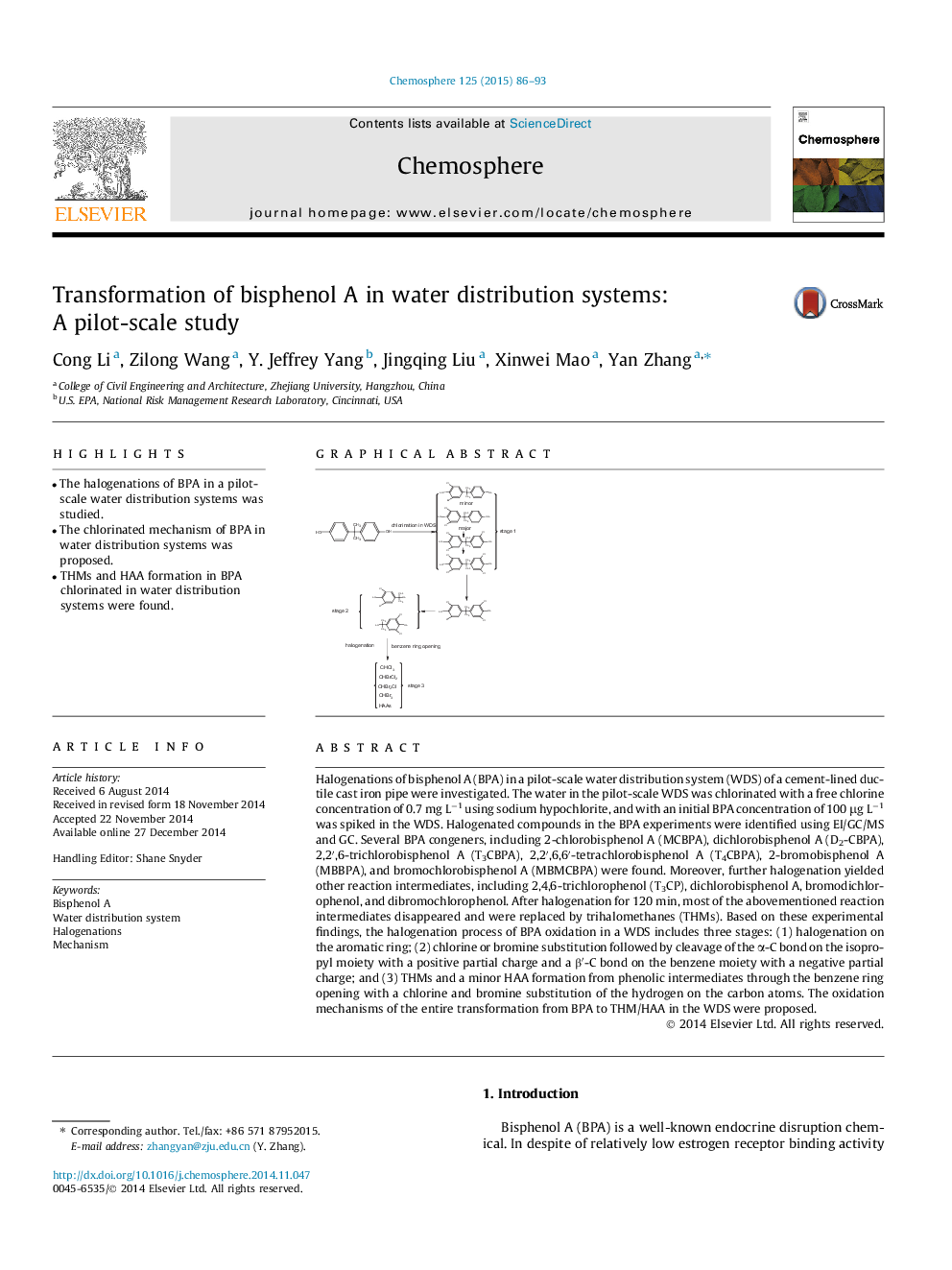| کد مقاله | کد نشریه | سال انتشار | مقاله انگلیسی | نسخه تمام متن |
|---|---|---|---|---|
| 4408345 | 1618846 | 2015 | 8 صفحه PDF | دانلود رایگان |

• The halogenations of BPA in a pilot-scale water distribution systems was studied.
• The chlorinated mechanism of BPA in water distribution systems was proposed.
• THMs and HAA formation in BPA chlorinated in water distribution systems were found.
Halogenations of bisphenol A (BPA) in a pilot-scale water distribution system (WDS) of a cement-lined ductile cast iron pipe were investigated. The water in the pilot-scale WDS was chlorinated with a free chlorine concentration of 0.7 mg L−1 using sodium hypochlorite, and with an initial BPA concentration of 100 μg L−1 was spiked in the WDS. Halogenated compounds in the BPA experiments were identified using EI/GC/MS and GC. Several BPA congeners, including 2-chlorobisphenol A (MCBPA), dichlorobisphenol A (D2-CBPA), 2,2′,6-trichlorobisphenol A (T3CBPA), 2,2′,6,6′-tetrachlorobisphenol A (T4CBPA), 2-bromobisphenol A (MBBPA), and bromochlorobisphenol A (MBMCBPA) were found. Moreover, further halogenation yielded other reaction intermediates, including 2,4,6-trichlorophenol (T3CP), dichlorobisphenol A, bromodichlorophenol, and dibromochlorophenol. After halogenation for 120 min, most of the abovementioned reaction intermediates disappeared and were replaced by trihalomethanes (THMs). Based on these experimental findings, the halogenation process of BPA oxidation in a WDS includes three stages: (1) halogenation on the aromatic ring; (2) chlorine or bromine substitution followed by cleavage of the α-C bond on the isopropyl moiety with a positive partial charge and a β′-C bond on the benzene moiety with a negative partial charge; and (3) THMs and a minor HAA formation from phenolic intermediates through the benzene ring opening with a chlorine and bromine substitution of the hydrogen on the carbon atoms. The oxidation mechanisms of the entire transformation from BPA to THM/HAA in the WDS were proposed.
Figure optionsDownload as PowerPoint slide
Journal: Chemosphere - Volume 125, April 2015, Pages 86–93